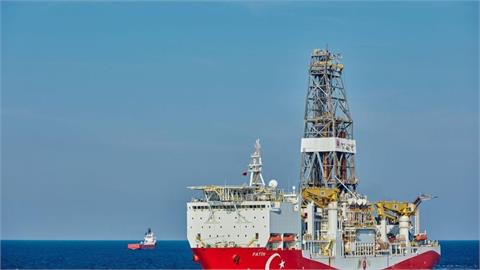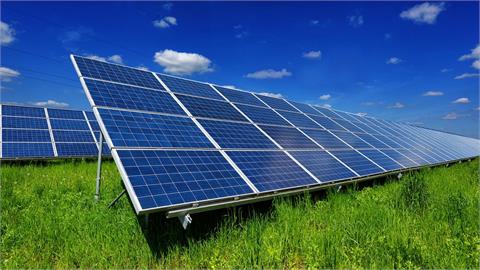The global energy sector in 2019 largely featured growing tensions between the U.S. and Iran, oil tanker attacks amid heightened tensions in the Middle East and climate crisis. The growing tensions between Iran, the U.S. and Saudi Arabia were at the center of discussions on the oil market in 2019 resulting in supply concerns.
The global energy sector in 2019 largely featured growing tensions between the U.S. and Iran, oil tanker attacks amid heightened tensions in the Middle East and climate crisis. The growing tensions between Iran, the U.S. and Saudi Arabia were at the center of discussions on the oil market in 2019 resulting in supply concerns. Tensions between the U.S. and Iran have been increasingly rising since last year when Washington unilaterally withdrew from the landmark 2015 nuclear deal between Tehran and the five permanent members of the UN Security Council plus Germany and the EU.
The U.S. has since embarked on a diplomatic and economic campaign to ramp up pressure on Iran to force it to renegotiate the agreement. Attempts to undermine the deal have included the re-imposition of U.S. sanctions on Iran's oil exports that were lifted as part of the 2015 agreement.
The U.S. announced on April 22 that the administration would no longer renew Iran sanctions' waivers. The eight countries that the waivers apply to are Turkey, Japan, South Korea, China, India, Taiwan, Italy and Greece. Following the announcement on April 24, oil prices reached their highest levels in 2019 when Brent traded at $74.65 per barrel. On April 25, Iran voiced its determination to continue to sell its oil and ship it through the Strait of Hormuz.
However, the U.S. continued its sanctions policy towards Iran. On June 8, the U.S. administration imposed sanctions on the Persian Gulf Petrochemical Industries Company (PGPIC) for indirectly supporting Iran's elite Islamic Revolutionary Guard Corps (IRGC). Then on June 16, the U.S. administration extended its sanction waiver for three more months on Iraq for energy imports from Iran.
On Sept. 20, the U.S. announced the imposition of sanctions on Iran's central bank. This was followed by other fresh sanctions on Sept. 25 to Chinese nationals and entities. The sanctions were directed specifically at COSCO Shipping Tanker Co. and COSCO Shipping Tanker Seaman & Ship Management Co. over their alleged transport of Iranian crude oil.
More recently, Iranian President Hassan Rouhani said their response to any negotiation with the U.S. under sanctions would be "negative" while stipulating that Iran would never negotiate with "an enemy that seeks to make Iran surrender with the weapon of poverty, pressure and sanctions."
-Tensions in the Gulf
Tensions in the Middle East escalated on May 13 when four commercial ships were attacked off the coast of the United Arab Emirates (UAE) port city of Fujairah. Two of the ships were Saudi-flagged oil tankers, one was an Emirati vessel, and the fourth was Norway-flagged.
During the same week, military drones attacked two oil pump stations on the East-West pipeline that carries oil from Saudi Arabia's Eastern Province to the Yanbu port in the Red Sea. The U.S. blamed Iran and its proxy forces for the attacks while on May 15 Saudi Arabia sent a letter to the UN Security Council denouncing Iran and Yemen's Houthi rebel group for targeting its oil facilities.
On June 13, two oil tankers were attacked in the Gulf of Oman. The Marshal Islands and the Panama-flagged vessels were en route to Taiwan and Singapore from Qatar and Saudi Arabia, respectively.
On July 4, the British Royal Marines seized an Iranian oil tanker in Gibraltar. The supertanker was suspected of transporting oil to Syria, which under EU law is considered a breach of the sanctions placed on the regime of Syria's Bashar al-Assad. On July 9, Iran vowed to respond to the seizure "at an appropriate time and place", adding that "the measure would not go unanswered."
On July 11, U.S. news channel CNN reported that five armed Iranian Islamic Revolutionary Guard Corps on boats attempted to seize a British oil tanker in the Persian Gulf, which Iran denied. After the reports, the U.K. government raised the threat level on British ships traveling in the Persian Gulf amid fears of exposure to attacks from Iran.
On July 12, the Iranian oil tanker seized in Gibraltar was "confirmed" to have contained 2.1 million barrels of light crude oil.
On July 18, naval forces of the IRGC seized a foreign vessel over smuggling fuel in the Gulf region. According to Iranian state TV, the oil tanker was carrying 12 people, and was "involved in smuggling roughly one million liters of oil from Iranian smugglers to sell them abroad."
The IRGC said on July 19 that it confiscated a British oil tanker in the Strait of Hormuz. "The British oil tanker Stena Impero was stopped by the IRGC's First Division of Navy for not falling in line with maritime rules," the Iranian forces said in a statement.
On July 20, the U.K. expressed its concern over Iran's seizure of the British oil tanker in the Persian Gulf. The EU and some European countries called on Iran to release the tanker, while the European Commission expressed "deep concern" over the seizure.
On July 24, the U.K. sent a mediator to Iran to resolve the issue. The following day, the U.K. called for a European-led maritime mission to ensure safe passage around the Persian Gulf. The British plan won initial support from France, Italy and Denmark. The U.S. also announced plans earlier for an international military coalition to provide safe passage for shipping around the Persian Gulf and Yemen.
On July 27, diplomats from countries still party to the 2015 nuclear deal with Iran held an emergency meeting in Vienna to discuss the possibility of salvaging the agreement. However, Iranians did not pin high hopes on a breakthrough at this meeting.
On August 4, Iran said it had seized a foreign oil tanker in the Persian Gulf for allegedly smuggling fuel, which Iran claimed later belonged to Iraq, a claim that Iraq has denied.
On August 19, the Iranian oil tanker seized in Gibraltar left the waters of Gibraltar en route to Iran. On Sept. 4, several crewmembers belonging to the seized British oil tanker were released and finally on Sept. 23, over two months after its seizure, Iran announced it was setting the British oil tanker free. On Sept. 27, the tanker left Iranian waters.
-Saudi Aramco attacks
On Sept. 14, fire erupted in two facilities of Saudi Arabia's oil company Aramco following strikes by armed drones. A day later, Saudi Arabia announced the temporary halt of oil production from its two oil facilities run by Aramco.
On Sept. 16, the Houthi rebels in Yemen claimed responsibility for the drone attacks. On Sept. 17, Saudi Energy Minister Prince Abdulaziz bin Salman confirmed that oil supplies had returned to their previous level seen before the Sept. 14 attacks on the facilities.
On Sept. 18, Saudi Arabia said it gathered evidence of Iran's involvement in the recent drone attacks on its Aramco oil facilities. The U.S., France, Germany and the U.K. also condemned Iran for the attack on Sept. 14.
Another attack that heightened tensions in the Middle East during the year occurred on Oct. 11. A missile attack caused an explosion at an Iranian oil tanker off the Saudi port city of Jeddah. On Oct. 21, Iran accused a "certain state" of carrying out the attack but failed to specify the country.
On Nov. 3, Saudi Arabia fully restored oil production.
-OPEC extends oil cut
The year also saw the Organization of Petroleum Exporting Countries (OPEC) and its allies agree on new oil production cuts. The cartel held its semi-annual meeting on Dec. 5-6. At the meeting, OPEC and its allies agreed to lower their collective crude oil production by an additional 500,000 barrels per day (bpd) for the first quarter of 2020.
In September, OPEC's crude oil production fell to its lowest monthly average in 10 years, OPEC data showed. Controlling 70% of the world’s oil supply in the 1970s, OPEC's share of the global oil market fell to 29% in September. As a result, arguments ensued over OPEC’s failure to lower the global oil supply glut to push crude prices higher. Some members left the cartel and others faced oil output declines, while both of these developments caused the market to question if the cartel has lost both control and market share in 2019.
Contrarily, global oil supply increased marginally during the month of November, the International Energy Agency's (IEA) Oil Market Report data released on Dec. 12 showed. The increase though came from non-OPEC countries as OPEC's oil production fell during the month.
Non-OPEC supply increased month on month by 320,000 to 66.15 million bpd in November. Total OPEC crude output, however, fell by 300,000 bpd from the previous month to reach 35.21 million bpd in November, according to the agency.
This year, Saudi Arabia's national oil company Aramco started its long-awaited trading on Dec. 11 on the country's stock exchange Tadawul with the symbol 2222, and immediately posted a 10% gain in its share price. Aramco also saw its market value surpass the $2 trillion mark on its second day of public trading on the Saudi stock exchange.
-U.S. also sanctions Venezuela
The U.S. administration also ramped up economic and diplomatic pressure on Venezuelan President Nicolas Maduro. On Jan. 29, the U.S. blacklisted Venezuela's state-owned oil and natural gas company, PDVSA and its U.S. subsidiary Citgo, the expectation of which was to block $7 billion in assets, and result in $11 billion of lost export revenue during 2019, according to the then U.S. National Security Advisor John Bolton.
On April 5, the U.S. blacklisted two companies in the Venezuelan oil sector and 34 vessels owned by Caracas' state-run oil company. Ballito Bay Shipping Inc. and ProPer in Management Inc. were also boycotted for operating in Venezuela's oil sector, according to the Treasury Department. Despina Andrianna, a ship the U.S. agency said was used to ship oil to Cuba, was also blacklisted.
On Dec. 3, the U.S. targeted six oil tankers in new Venezuela-related sanctions. The Treasury Department added five Venezuela-flagged and one Panama-flagged vessel linked to Venezuela's state-owned oil company, PDVSA, to its sanctions list.
-Climate emergency protests
This year massive protests took place calling for urgent action to prevent global warming. The protesters called on world leaders to respond more urgently to the climate crisis. The UN Climate Action Summit kick started on Sept. 23 with a climate emergency declaration while wanted posters were spread across New York of Shell, BP, ExxonMobil and Chevron CEOs pictured as "climate criminals."
Ahead of the summit, 66 countries showed their commitment to net-zero carbon dioxide emissions by 2050, including 10 regions, 102 cities, 93 businesses and 12 investors. On Sept. 24, Russia officially joined the Paris Agreement on climate change.
The same week between Sept. 20 and 27 saw one of the biggest global demonstrations calling for action on the climate crisis. Over 7.6 million people held demonstrations on streets and squares -- almost equal in numbers to the 2003 anti-Iraq war protests, making it one of the biggest global demonstrations in the history of protests, according to the climate action group, the 350 Movement.
"More than 6,100 events were held in 185 countries, with the support of 73 Trade Unions, 820 civil society organizations, 3,000 companies and 8,500 websites," the group said. Meanwhile, the U.S. submitted paperwork on Nov. 5 to the UN that begins the one-year process to formally withdraw from the historic Paris climate accord. However, on Nov. 6, a group of over two-dozen mostly Democratic governors vowed to maintain obligations under the Paris climate accord, despite U.S. President Donald Trump's effort to quit the pact.
On Nov. 8, a "climate strike" was declared the Word of the Year for 2019 by the Scotland-based Collins dictionary. Climate strikes have become so frequent in large parts of the world that its usage increased a hundredfold in 2019, the dictionary reported.
On Nov. 15, the European Investment Bank said it would no longer finance any fossil fuel energy projects including natural gas from the end of 2021 onwards.
A two-week United Nations climate summit began in Madrid on Dec. 2 to convene world leaders and activists for talks on tackling the climate crisis. On Dec. 6, climate activist Greta Thunberg led a major protest in Madrid, as UN leaders and decision-makers congregated in the Spanish capital for the COP25 UN climate summit.
-Nord Stream II
The Nord Stream II project made significant progress in 2019. On Feb. 8, Germany and France reached a compromise on the Nord Stream 2 gas pipeline project. On Oct. 31, the Danish Energy Agency permitted the Nord Stream II AG company to build a section of the pipeline in the Danish Baltic Sea.
On Nov. 21, Deputy Prime Minister of Russia Dmitry Kozak confirmed that the pipeline would begin operations in mid-2020. More than 80% of the pipeline has been built for the project whose completion was originally expected by the end of 2019.
On Dec. 12, German Foreign Minister Heiko Maas lambasted U.S. plans to impose sanctions on the Nord Stream II pipeline project. The U.S. Senate overwhelmingly passed a massive $738 billion defense spending bill on Dec. 18 that includes sanctions on vessels used to construct the TurkStream and Nord Stream II pipelines.
(Anadolu Agency)




